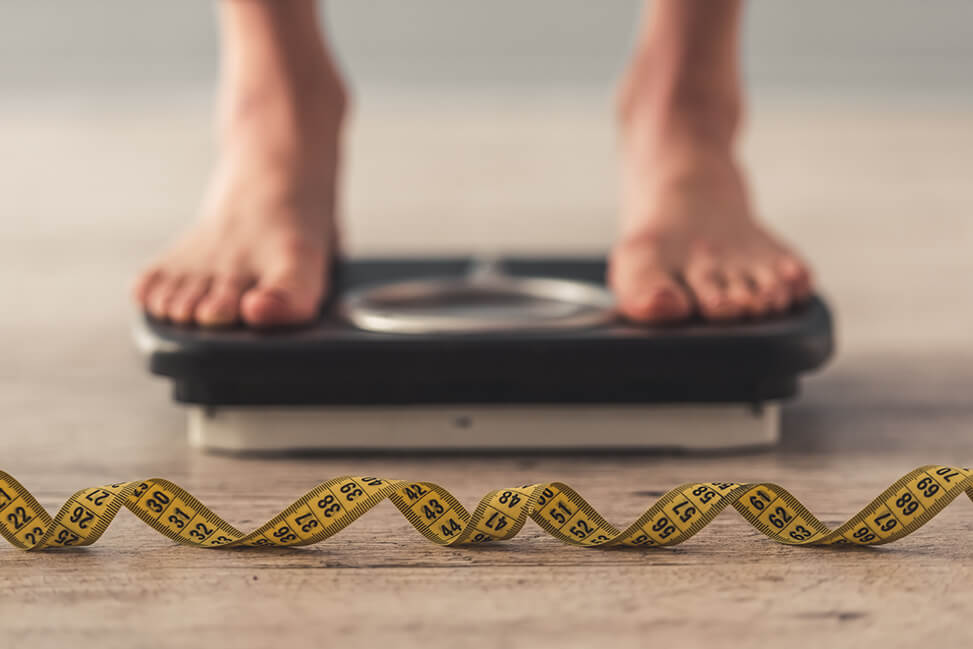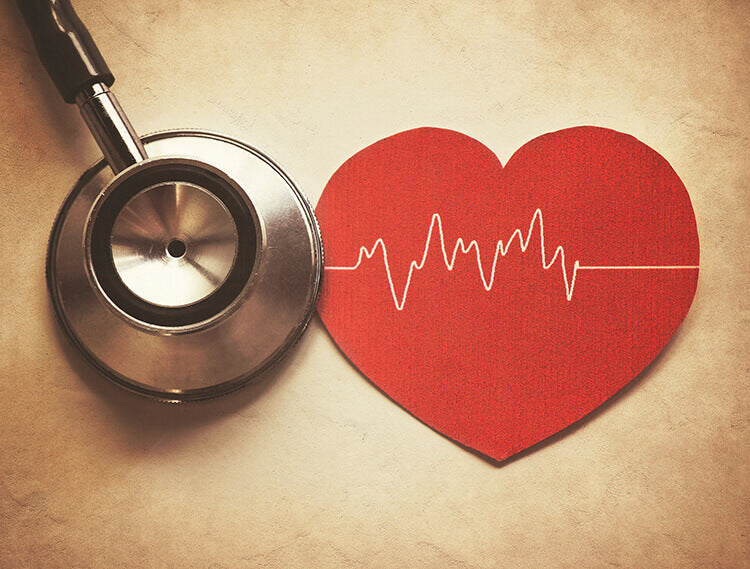Are you tired of trying countless weight loss methods without seeing the results you desire? What if there was a fun, enjoyable, and effective way to shed those extra pounds? Welcome to the world of losing weight by cycling, an incredible method to lose weight and transform your life! In this blog post, we’ll explore the science behind cycling for weight loss, various training plans, how to combine cycling with other exercises, nutrition tips, and mental strategies to help you succeed on your weight loss journey.
Cycling not only helps you lose weight but also offers numerous health benefits, making it an ideal choice for those looking to achieve a healthy and sustainable lifestyle. So, hop on your bike and let’s dive into the world of weight loss through losing weight by cycling!
Key Takeaways
- Cycling is an effective way to burn calories, increase cardiovascular fitness and boost metabolism.
- Incorporate strength training, HIIT & flexibility exercises into your cycling routine for successful weight loss results.
- Utilize mental strategies such as goal setting and motivation maintenance to stay focused on reaching a healthy weight!
The Science Behind Cycling and Weight Loss

Cycling is a fantastic way to lose weight and achieve a healthy body weight. But how does it work? Lose weight through cycling contributes to weight loss by burning calories, enhancing cardiovascular fitness, and kickstarting your metabolism. When paired with a balanced diet, cycling can be a powerful tool for weight loss.
The primary objective of cycling for weight loss is to create a calorie deficit and achieve your desired weight loss goals. High-intensity interval training (HIIT) is one of the best ways to lose fat quickly and effectively. Riding in zones six and seven for short bursts above your functional threshold power can help increase the intensity of your workout. This results in more calories burned, both during and after the exercise.
Calorie Burning
For weight loss, it's crucial to burn more calories than you intake, creating what's known as a calorie deficit. Cycling provides an efficient way to achieve this deficit, consume fewer calories, and shed excess weight.
Achieving and sustaining a caloric deficit is key to successful fat loss. By upping your exercise intensity, duration, and volume, you can maximize caloric expenditure without adjusting your diet. With regular cycling, you’ll be able to burn calories efficiently and make progress towards your weight loss goals, ultimately burning fat.
Cardiovascular Fitness
Cycling is not only an excellent calorie burner but also a fantastic way to boost your cardiovascular fitness. It can help to strengthen your heart health and boost your aerobic endurance, allowing your body to more effectively burn fat and carbohydrates. Endurance training increases your ability to burn fat and carbohydrate per hour, helping you reach your goals faster.
It’s important to approach weight loss cautiously, as rapid reduction can lead to muscle mass decrease. Balancing calorie deficit with muscle mass maintenance is key to a sustainable weight loss journey.
Metabolism Boost
Regular cycling can also boost your metabolism, enabling your body to burn calories more efficiently and effectively. Achieving a 10% calorie deficit at certain times of the year can help you reach your weight loss goals while still training effectively.
High-intensity workouts can help you burn calories even after you finish exercising, as post-exercise oxygen consumption can be increased, and your overall metabolism can be boosted for up to 24-36 hours afterward. Combining high-intensity workouts with regular cycling can significantly enhance your weight loss results.
Cycling Training Plans for Effective Weight Loss

A structured training plan is instrumental for sustainable weight loss through cycling. Training plans tailored to different fitness levels ensure gradual weight loss. Setting clear goals and committing to a weekly training routine can propel you towards these goals.
We’ll delve into the specifics of beginner, intermediate, and advanced cycling training plans. These plans target different areas including endurance building, ride duration and intensity increase, and high-intensity interval incorporation. Following a plan that suits your fitness level can enhance your weight loss results and promote a healthier lifestyle.
Beginner Plan
If you are new to cycling, a beginner plan is the perfect starting point. The beginner plan for cycling training involves:
- Riding 2-3 times per week
- Totaling 2-3 hours of riding
- Gradually increasing the duration and frequency of your rides as you progress
- Aiming for at least one long ride on the weekend, lasting around 3 hours, to build your cycling endurance.
- Cycling apps like Strava are great to use to track your ride and your performance over time. Be sure to use a phone mount for your bike so you can keep your phone securely mounted to your handlebars. A wireless charging phone case and mount is a great option so you won't have to worry about your phone battery dying on your rides.
Consistency is essential for success, so make sure to keep riding regularly and gradually build up your time on the bike. Commencing with a beginner plan and gradually intensifying your routine sets the foundation for a successful and enjoyable weight loss journey.
Intermediate Plan
Once you have mastered the beginner plan, it’s time to move on to the intermediate plan. This plan incorporates:
- Longer rides
- Higher intensity intervals
- Strength training
- HIIT
- Flexibility and mobility exercises
These elements will challenge your body and promote weight loss, helping you reach your peak performance and improve your body composition.
Remember, the key to success is to stay consistent and keep pushing yourself. Incorporate new challenges in your workout routine and continue to strive for improvement. Advanced Plan
For advanced cyclists, focusing on high-intensity interval training and hill climbs can maximize calorie burn and weight loss. The advanced plan for cycling training involves endurance sessions at specific heart rate zones, long rides with sprints, and progressive increases in training hours per week, all to help you develop race pace intensities and reach your peak performance.
By incorporating strength training, high-intensity interval training (HIIT), and flexibility and mobility exercises, advanced cyclists can enhance their performance and achieve their weight loss goals. Remember, the key to success is consistency and determination, so keep pushing yourself and never give up on your goals!
Combining Cycling with Other Exercises

Incorporating other exercises with your cycling routine can significantly enhance your weight loss results and overall fitness. Strength training, HIIT, and flexibility exercises can all complement your cycling training, providing additional benefits such as weight management, improved cardiovascular fitness, increased muscle strength and power, and enhanced core strength and stability.
Integrating cycling with other exercises allows for a comprehensive workout routine that targets various fitness areas. This strategy keeps you motivated, offers diverse challenges to your body, and expedites your weight loss journey.
Strength Training
Adding strength training to your cycling routine can help you maintain lean muscle mass and promote weight loss. Compound lifts that work multiple muscle groups, like squats, deadlifts, and bench press, are great for helping you reach your weight loss goals.
Strength training provides many health benefits. It helps recruit muscle fibers, which in turn improves overall health and wellbeing. By incorporating strength training into your cycling routine, you can achieve a more balanced and effective approach to weight loss.
High-Intensity Interval Training (HIIT)
High-intensity interval training (HIIT) workouts can increase calorie burn and improve cardiovascular fitness, making them an excellent complement to cycling for weight loss.
Here are some benefits of HIIT workouts:
- Increase calorie burn
- Improve cardiovascular fitness
- Maximize workout time
- See amazing results
To incorporate HIIT into your weight loss plan, you can perform these workouts on days when you are not cycling. This way, you can burn more calories, improve your cardiovascular fitness, and make the most of your weight loss journey.
Flexibility and Mobility Exercises
Stretching and mobility exercises can improve your cycling performance and prevent injuries, supporting a consistent weight loss journey. By increasing your range of motion, reducing the risk of injury, and enhancing your posture, flexibility exercises can greatly benefit your overall physical and mental wellbeing.
Incorporating flexibility and mobility exercises into your cycling routine can help you stay injury-free and maintain a consistent workout schedule, ultimately leading to better weight loss results. Remember to focus on the major muscle groups, like:
- Hips
- Hamstrings
- Quads
- Calves
For optimal results, consider the power to weight ratio when making your decision.
Cycling Nutrition Tips for Weight Loss

Optimal nutrition is key to enhancing weight loss results with cycling. Attention to meal timing, hydration, and smart snacking strategies can significantly influence your success. Emphasizing these nutritional aspects ensures effective workout fuel, promotes recovery, and aids in maintaining a consistent calorie deficit throughout your cycling journey.
We’ll now delve into some nutrition tips to maximize your weight loss efforts. Implementing these strategies can foster a sustainable and enjoyable weight loss journey with cycling.
Meal Timing
Aligning meals with training sessions can help fuel your workouts and promote recovery without compromising your weight loss goals. Eating a meal or snack before and after your workout will ensure you have enough energy to complete your workout and help with recovery.
To maximize your workout performance, it’s important to eat a meal or snack before and after longer, more intense workouts. For shorter, less intense workouts, a snack before and after may be sufficient. By aligning your meals with your training sessions, you can make the most of your weight loss journey.
Hydration
Staying hydrated is essential for optimal cycling performance and weight loss, as dehydration can hinder both. Drinking plenty of fluids before, during, and after cycling can help you stay hydrated and ensure your body functions at its best.
If you feel thirsty, have a dry mouth, feel tired, notice dark-colored urine, or have a headache, these could be signs of dehydration and it’s important to take action. By staying hydrated, you can maintain peak performance and support your weight loss efforts.
Snacking Strategies
Choosing nutrient-dense, low-calorie snacks can help manage hunger and support your weight loss efforts as part of a healthy diet. Some excellent options for healthy snacking include:
- Fruits
- Vegetables
- Nuts
- Seeds
- Whole grains
Snacking strategies can be incorporated into a weight loss plan by:
- Planning ahead and having healthy snacks on hand
- Being mindful of portion sizes
- Avoiding snacking out of boredom or stress
- Staying on track to maintain a consistent calorie deficit and achieve your weight loss goals.
Mental Strategies for Successful Weight Loss
Goal setting, plateau overcoming, and motivation maintenance are vital for a successful weight loss journey via cycling. Concentrating on these mental strategies helps maintain your commitment and dedication to your goals.
We’ll now delve into several mental strategies to keep you focused, motivated, and on track for your weight loss goals. Utilizing these strategies helps maintain a positive mindset and ensure a successful weight loss journey with cycling.
Goal Setting
Defining clear, realistic weight loss goals can help you stay focused and motivated throughout your journey. By setting achievable goals and monitoring your progress, you can stay on track and make the most of your cycling efforts to reach a healthy weight.
making a goal achievable and timely requires setting it against the backdrop of an event. Tie your goal to an event to keep yourself motivated and on track. This way, you can stay motivated and track your progress. Remember, starting with small, manageable changes can help you get off to a great start, and then you can gradually add more changes to your diet.
Overcoming Plateaus
Plateaus can be frustrating and demotivating, but there are ways to break through them and continue making progress. Adjusting your training plan, nutrition strategies, and staying committed to your goals can help you overcome plateaus and achieve success.
By staying dedicated and adjusting your approach when needed, you can break through plateaus and continue on your weight loss journey. Remember, staying motivated and committed to your goals is crucial for success in losing weight.
Staying Motivated
Focusing on the enjoyment of cycling and celebrating small victories can help maintain motivation and commitment to your weight loss goals. By appreciating the scenery, listening to your favorite tunes, and setting realistic goals, you can make cycling an enjoyable experience.
Having a workout buddy or joining a cycling group can also help you stay motivated and reach your goals. Remember, staying dedicated and enjoying the journey is just as important as achieving your weight loss goals.
Summary
In conclusion, cycling is an excellent way to lose weight and achieve a healthy lifestyle. By understanding the science behind cycling and weight loss, following appropriate training plans, incorporating other exercises, maintaining proper nutrition, and implementing mental strategies, you can set yourself up for a successful and enjoyable weight loss journey.
So, get on your bike, set your goals, and embrace the exciting world of weight loss through cycling. With dedication, determination, and the right plan in place, you can achieve your weight loss goals and enjoy the countless benefits of a healthier, happier life.
Frequently Asked Questions
Is cycling a good way to Lose belly fat?
Cycling is a great way to reduce belly fat because it is an intense workout that burns more calories per hour than walking and can help you lose overall fat quickly.
How much should I cycle a day to lose weight?
To lose weight, try cycling for 30-60 minutes per day at a moderate pace. This will help you burn 250-500 calories, making it an efficient and affordable exercise to reach your weight loss goals. Start by aiming for 5 miles a day, gradually increasing to 12-14 miles per day or 84-98 miles per week.
Is 30 minutes of cycling a day enough to lose weight?
Cycling for 30 minutes four times a week can help accelerate your weight loss and significantly improve your fitness levels. Burning about 1.3kg of fat per month, it is possible to lose 0.5-1 pound per week with this amount of cycling when combined with a calorie-controlled diet. However, it is recommended to cycle for an hour or more for optimal fat loss.
Can I lose weight just by cycling?
Yes, cycling is a great way to lose weight as it increases activity levels, burns calories, boosts heart and lung health, improves blood flow, builds muscle strength, and lowers stress levels. An hour of cycling can burn up to 500 calories which can create a calorie deficit that leads to weight loss.
What are the main benefits of cycling for weight loss?
Cycling is an excellent way to burn calories, get fitter and boost your metabolism, helping you reach your weight loss goals.




Leave a comment
This site is protected by hCaptcha and the hCaptcha Privacy Policy and Terms of Service apply.